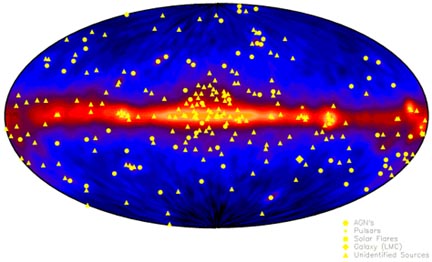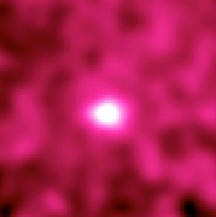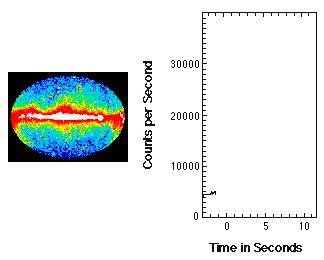|
What do gamma-rays show us?return to previous page of Gamma rays
The familiar sights of constantly shining stars and galaxies would be replaced by something ever-changing. Your gamma-ray vision would peer into the hearts of solar flares, supernovae, neutron stars, black holes, and active galaxies. Gamma-ray astronomy presents unique opportunities to explore these exotic objects. By exploring the universe at these high energies, scientists can search for new physics, testing theories and performing experiments which are not possible in earth-bound laboratories.

The Crab nebula, shown also in the visible light image, was created by a supernova that brightened the night sky in 1054 A.D. In 1967, astronomers detected the remnant core of that star; a rapidly rotating, magnetic pulsar flashing every 0.33 second in radio waves. Perhaps the most spectacular discovery in gamma-ray astronomy came in the late 1960s and early 1970s. Detectors on board the Vela satellite series, originally military satellites, began to record bursts of gamma-rays -- not from Earth, but from deep space!
Gamma-ray bursts can release more energy in 10 seconds than the Sun will emit in its entire 10 billion-year lifetime! So far, it appears that all of the bursts we have observed have come from outside the Milky Way Galaxy. Scientists believe that a gamma-ray burst will occur once every few million years here in the Milky Way, and in fact may occur once every several hundred million years within a few thousand light-years of Earth. Studied for over 25 years now with instruments on board a variety of satellites and space probes, including Soviet Venera spacecraft and the Pioneer Venus Orbiter, the sources of these enigmatic high-energy flashes remain a mystery. By solving the mystery of gamma-ray bursts, scientists hope to gain further knowledge of the origins of the Universe, the rate at which the Universe is expanding, and the size of the Universe. |


